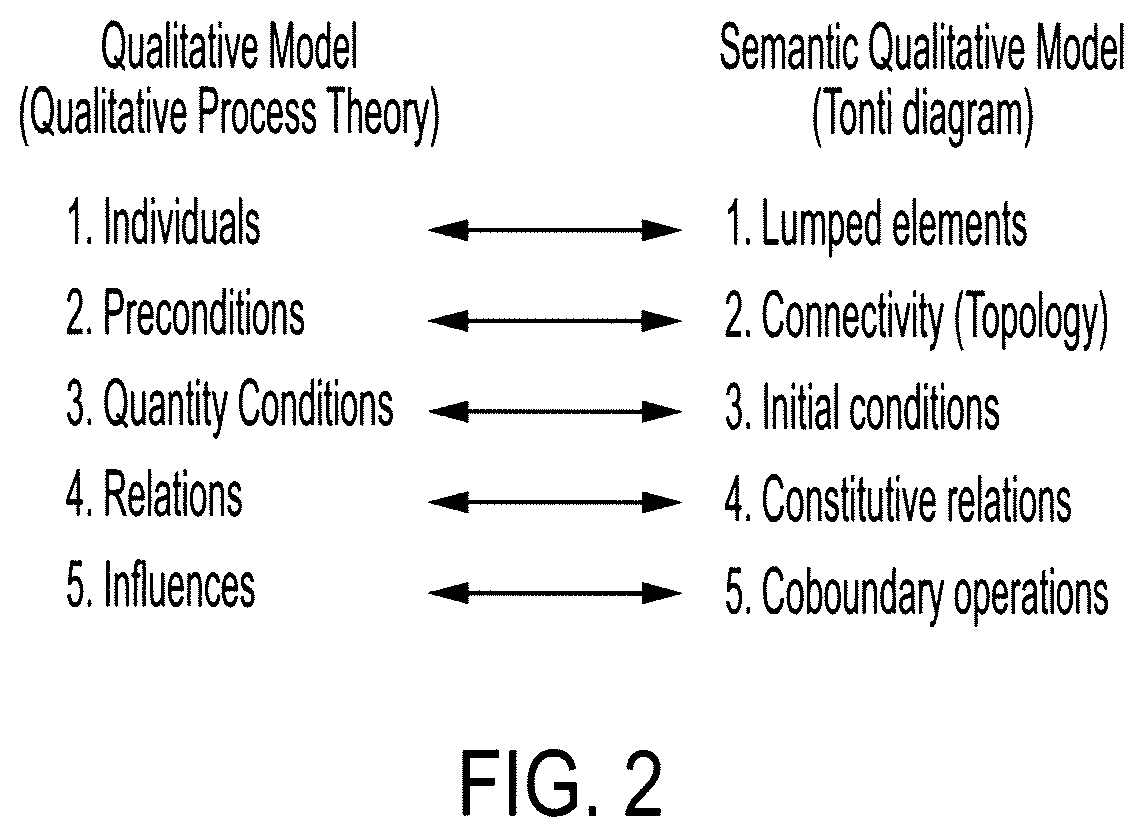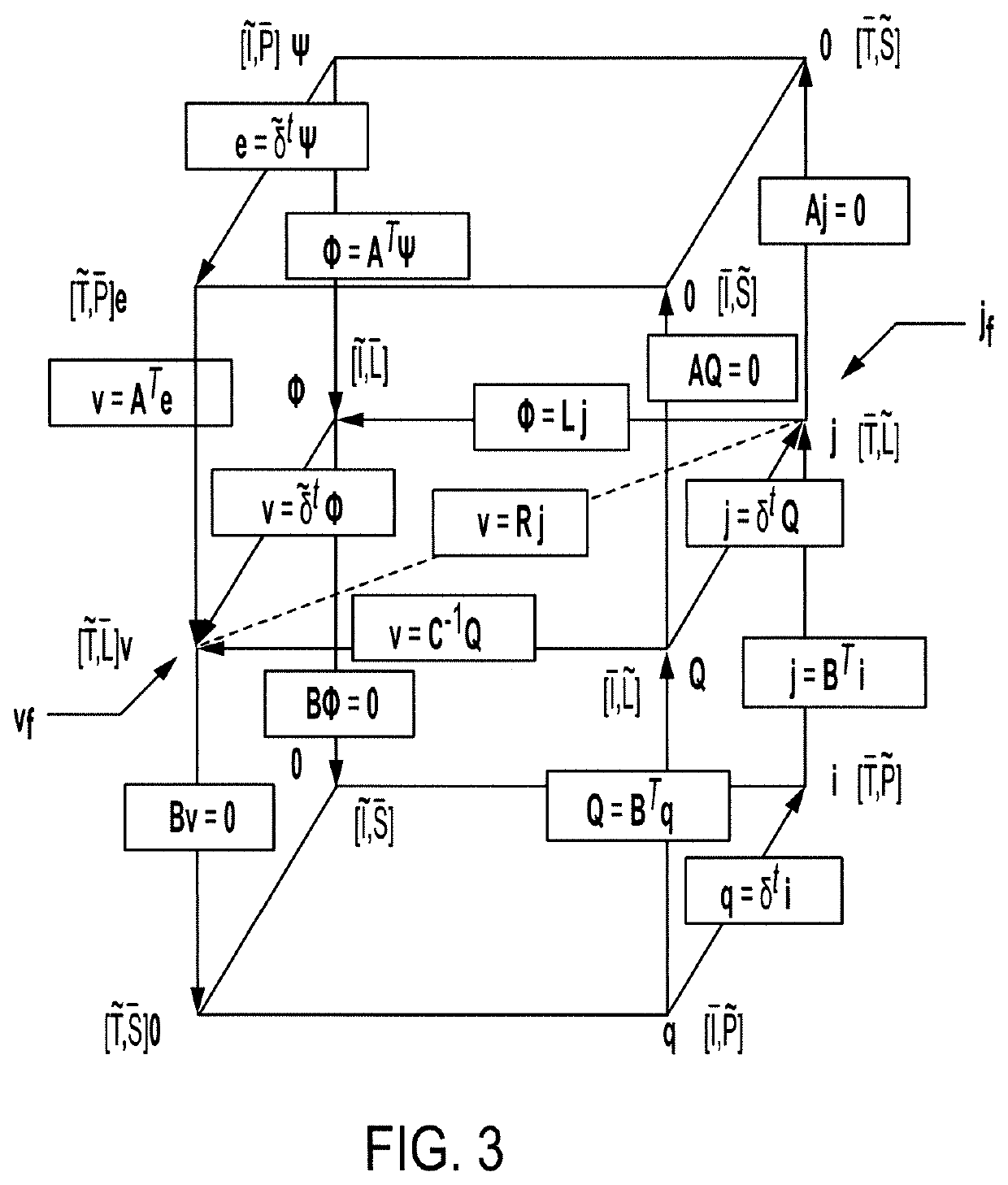Method and system for qualitative reasoning of spatio-temporal physical systems
a spatio-temporal physical system and qualitative reasoning technology, applied in the field of qualitative simulation of physical systems, can solve problems such as unsuitable existing techniques
- Summary
- Abstract
- Description
- Claims
- Application Information
AI Technical Summary
Benefits of technology
Problems solved by technology
Method used
Image
Examples
example 1
Weather Forecast
[0060]Suppose there is a qualitative distributed parameter model of cloud drops created in the lower-middle layer of the sky. If the temperature of the air patch increases, then the air patch rises due to the buoyancy. With reference to FIG. 8, cloud drops 810 can be supported by the air patch and then raised; cloud drops become ice drops / crystals as they rise. The air patch rises up to the level of free convection. The ice drops 820 move horizontally due to the convection. During the advection 830, precipitation particles are not supported by updraft and tend to fall. The area where precipitation particles fall is where rainfall 840 occurs. It can be seen from this example that the physical quantities (e.g. position, density of the air, velocity of air flow, temperature, heat flux, state of the matter such as solid or gas) are functions of both space and time. The simulation of qualitative lumped parameter model of cloud drops cannot achieve such results (e.g. model...
example 2
Crack Detection
[0061]Suppose there is a qualitative distributed parameter model (represented by Tonti diagrams) of a 3D metallic box 910 made of aluminum alloy with cracks 920, as shown in FIG. 9. By adding a wave source 930 at the center of one surface of the 3D metallic box 910, after the qualitative simulation, it is possible to find the position of the cracks 920 by checking at what positions there is a sudden change of the wave amplitudes. Such changes are not only a function of time but also a function of space. FIGS. 14A and 14B show a Tonti diagram that may be used for this example.
example 3
Human Body Damage Prediction
[0062]Suppose there is a qualitative distributed parameter model (represented by Tonti diagrams) of a 3D seated human body 1010, as shown in FIG. 10A. If a vibration source is added to the platform, after the qualitative simulation, it is possible to generate the qualitative relation between the vibration frequency and the damage of different organs, where the latter one can be defined as the relative qualitative velocity between neighboring organs. Since organs are located at different positions in the human body, the simulation of qualitative lumped parameter model 1050 of FIG. 10B on the right side cannot get similar results. FIGS. 14A and 14B show a Tonti diagram that may be used for this example.
[0063]FIGS. 11-13 show flowcharts of embodiments of the systems and methods described herein.
[0064]With reference to FIG. 11, at step 1110, a qualitative spatio-temporal model of the physical system is constructed. In an optional step 1120, using fully or par...
PUM
 Login to View More
Login to View More Abstract
Description
Claims
Application Information
 Login to View More
Login to View More - R&D
- Intellectual Property
- Life Sciences
- Materials
- Tech Scout
- Unparalleled Data Quality
- Higher Quality Content
- 60% Fewer Hallucinations
Browse by: Latest US Patents, China's latest patents, Technical Efficacy Thesaurus, Application Domain, Technology Topic, Popular Technical Reports.
© 2025 PatSnap. All rights reserved.Legal|Privacy policy|Modern Slavery Act Transparency Statement|Sitemap|About US| Contact US: help@patsnap.com



